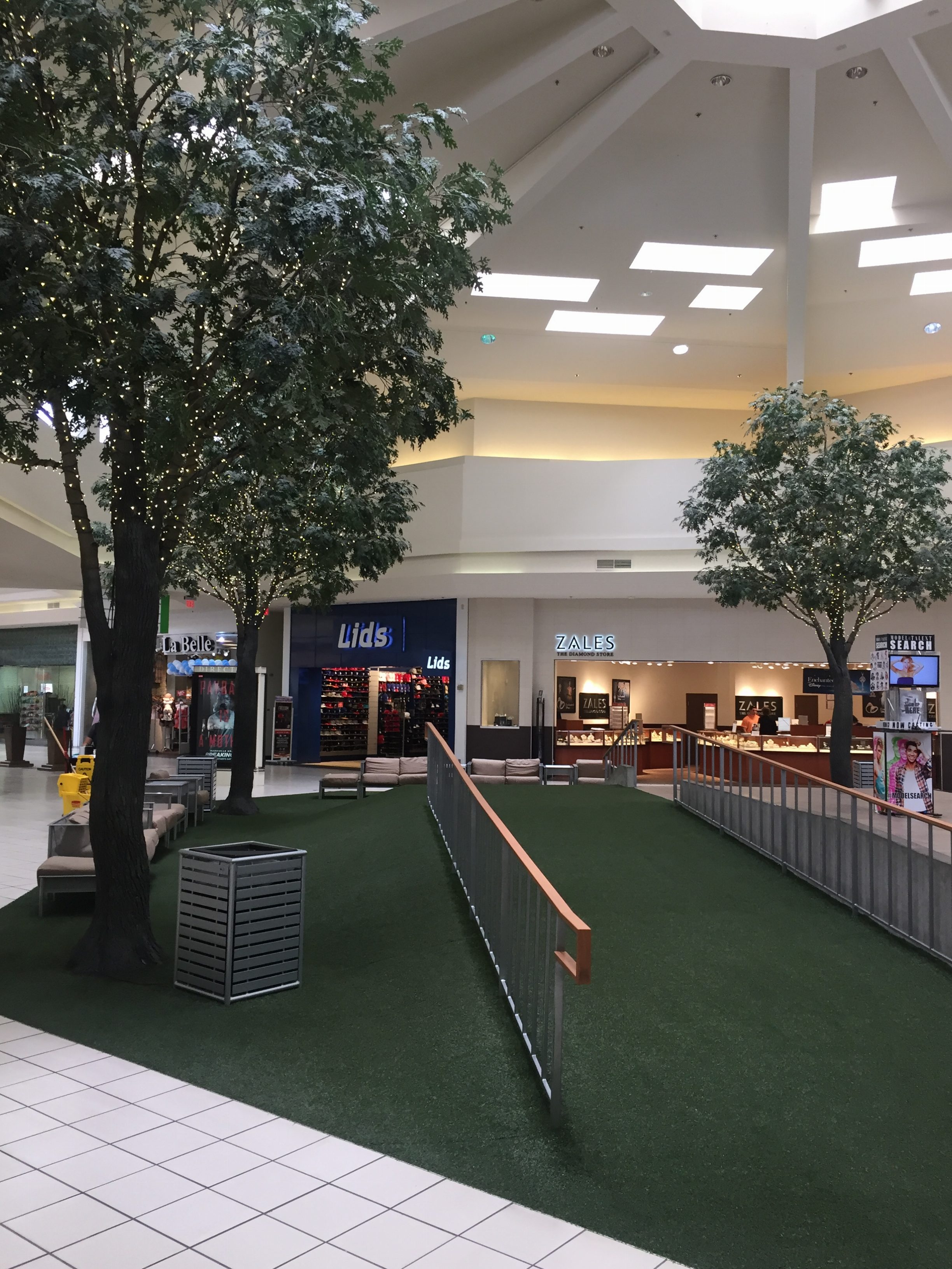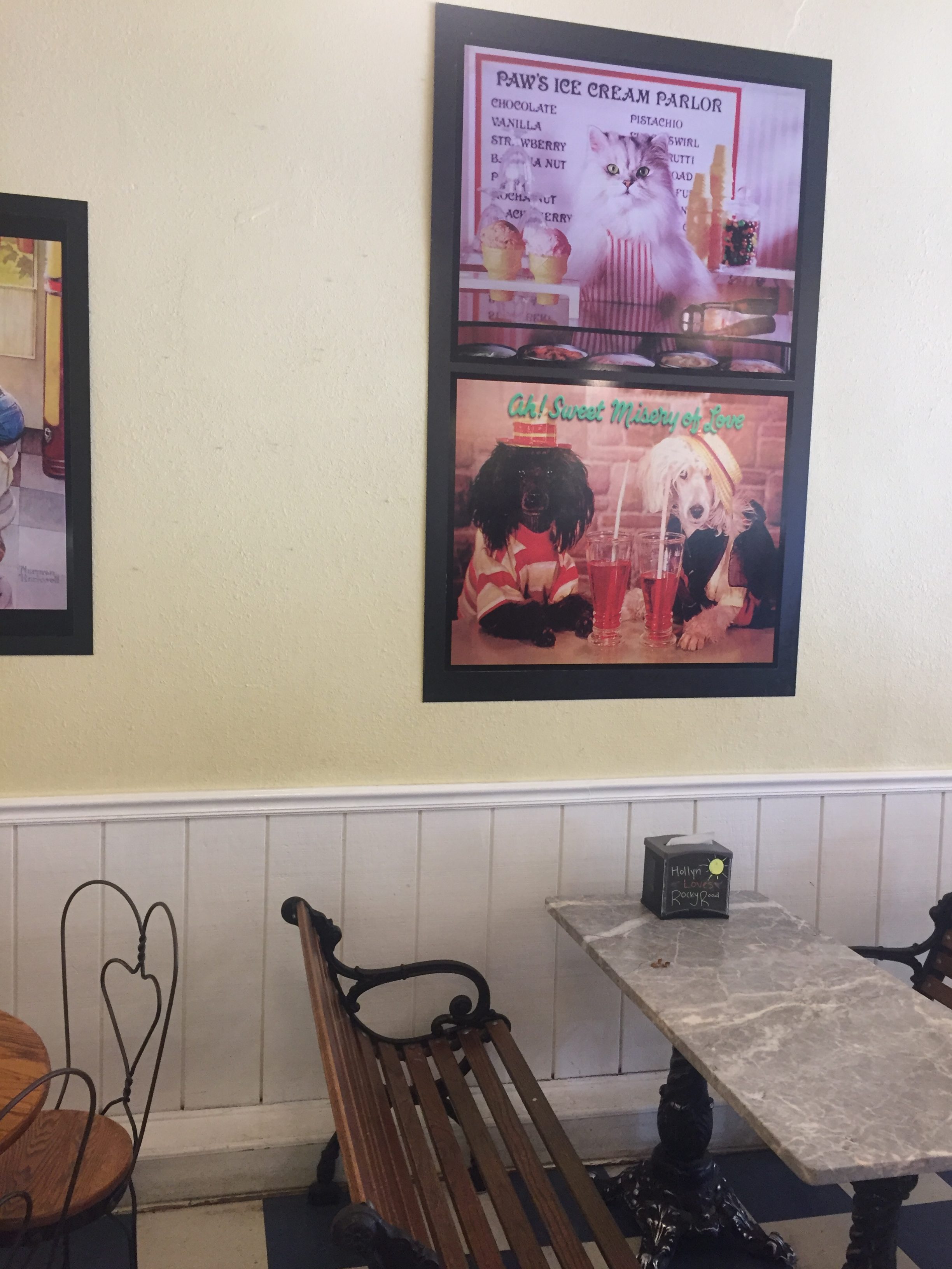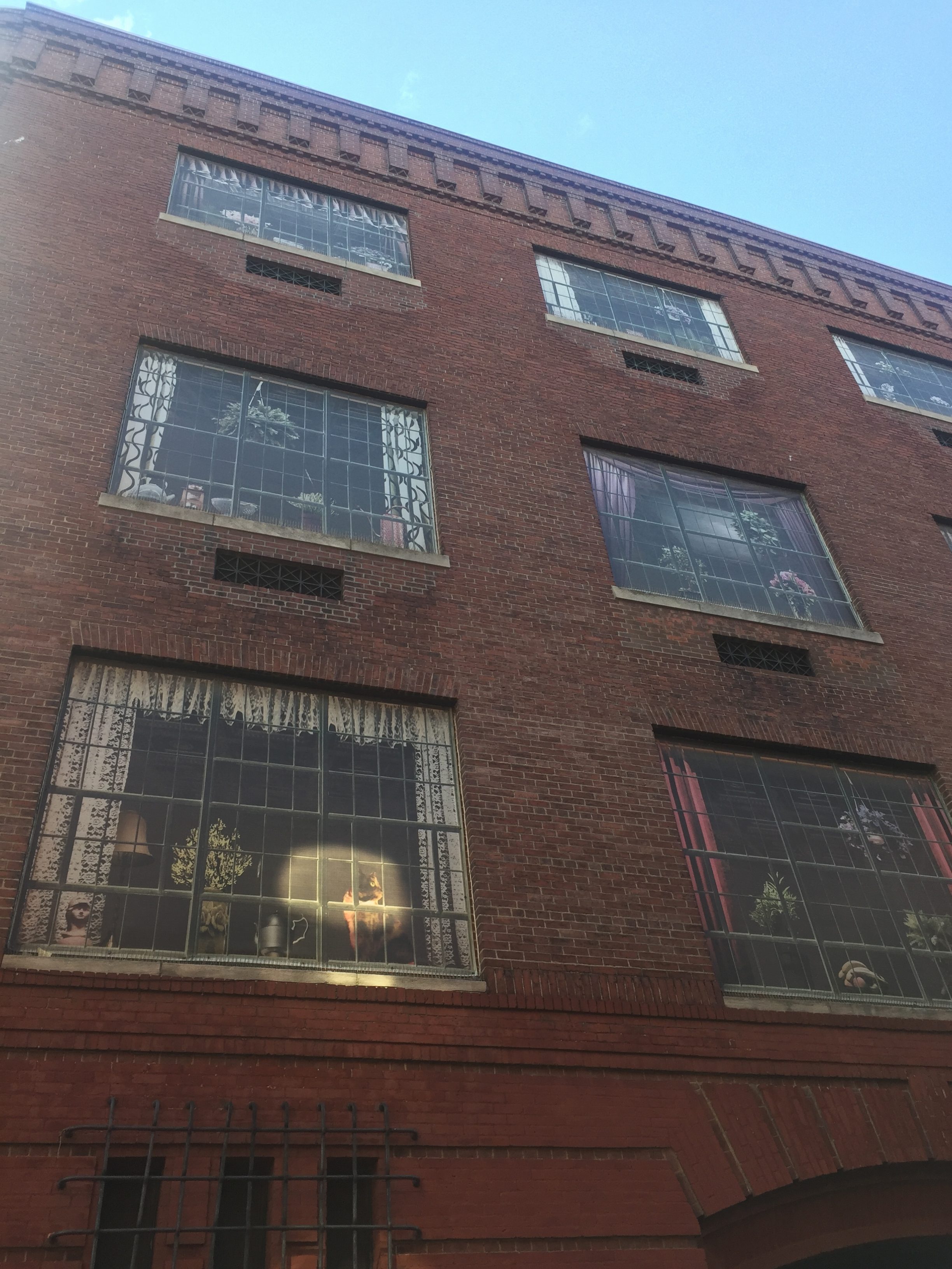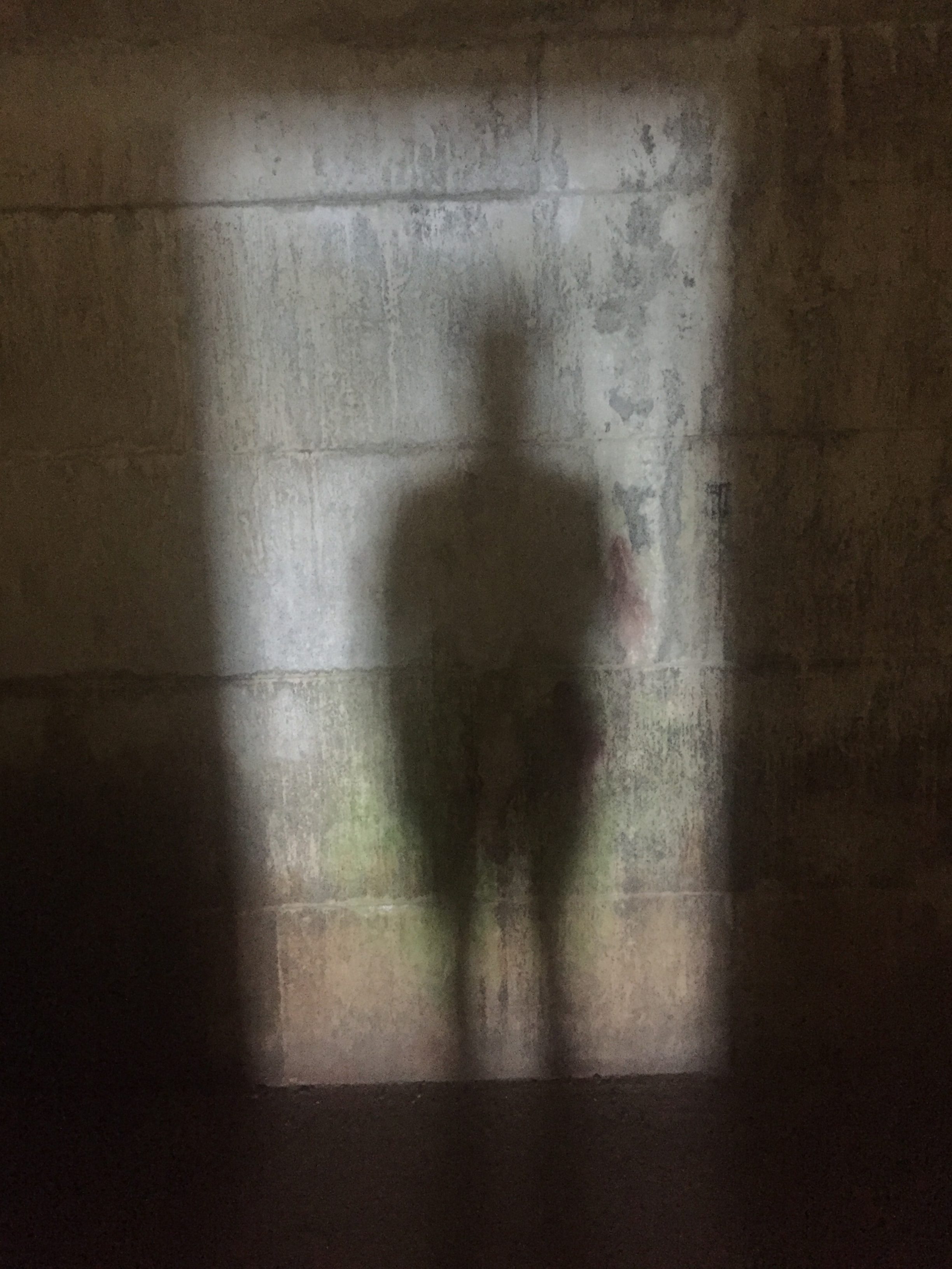urban growth

The traveler explores the American Wayside, verifying the contents of a mysterious guide written by a man with whom he shares a likeness and name. Excerpts from ‘Autumn by the Wayside: A Guide to America’s Shitholes’ are italicized. Traveler commentary is written in plain text.

‘Richard Langley of Canton, Mississippi claims to be the nation’s oldest living man, though no authority has yet graced him with the title. By his account, and by the account of a tattered document, ‘Dick’ is 154 years old and an 89-year citizen of the United States. The document is nigh unreadable but the man looks the part- looks older even. Dick Langley aches with age and the world aches around him, his floorboards creaking- the spines of his books (and his back) twisted with the long burden of life. His is not the story of a man that lives well into his hundreds, but of a man that lives unwell, that lives nonetheless.
Due to Dick’s inability (and now, unwillingness) to verify his age with any legal institution, the man’s claims only serve as an introduction to his small, roadside collection of teeth. The collection is a mere 85 pieces but each (excepting one) has been genetically verified to be a Dick Langley original- the initial 20 baby teeth, the full set of adults, and then a third set of haunting bones that grew into Dick’s mouth beginning in his 126th year. ‘Dick’s Senior Teeth’ are milky and vaguely translucent, their tips ragged like an old dish towel. One is streaked red throughout, some stray nerve or blood vessel that remains sealed up in the dense enamel. Another is curved like an elephant tusk and hollowed by a deep cavity.
There are pictures of the teeth coming in, all the blood and pain of a child’s teething in the mouth of an old man. Copies of Dick’s dentist reports are spiral-bound and available as a perk of the ‘show.’ They detail astonishment, mostly (“Where are they coming from?”) and concerns for the man’s health (“…suggests removing them may be as dangerous as leaving them in.”). They come to few conclusions before Dick runs out of money and spends the following decade with his new set. As we know by now, these too will eventually loosen at their anchors.
The one tooth in the collection that doesn’t belong to Dick arrived in his mailbox in 2007, as twisted and malformed as his own. The sender, a woman in the Ukraine, claims to be 134 and has gone through the same oral molting.
‘Dick’s Senior Teeth’ is an uncomfortable attraction. The facilities are unkempt and Dick himself is hardly a draw, so near death he seems to be. Despite its welcome mat, an entrance into ‘Dick’s Senior Teeth’ feels like an intrusion and the sight of the teeth will leave even the hardiest traveler’s jaw itching for some time after.’
A plague of detours means I arrive at Dick’s too late, the man having passed away in the night.
-traveler

Preoccupied, I pass the same sign several times before I realize it is the same sign and not just iterations of the curt message it bears:
‘WEIGH STATION – ALL VEHICLES MUST TURN OFF’
The same pull-away ramp follows just a quarter-mile down the road, skirting a little hut and looping neatly back around to the highway. I pass it again and see the sign soon after, it having only just disappeared from the rattled mirrors of my bike.
With a dramatic (and singularly personal) show of reluctance, I gather the scattered pieces of paperwork that have proven necessary on the trip thus far: several licenses (current, expired), registrations for the bike in two states (solid, gray), a handful of drawn charms for safe passage, luck, wealth, a ward against nightmares (cold iron, I’m told, just a rusted rod of it) and proof of insurance. I loose two rings from my key chain, one for the right hand (the tell symbol for a secret society) and another for the left, under a glove (the tell symbol for a splinter of the same society).
I remind myself of my aliases, of their ages, occupations, and previous addresses. I remember the reasons, true and false, that my own appearance has so changed from even the most recent pictures of me (missing teeth, close-cut hair, patchy beard). I clear my throat and practice greeting someone in a way that communicates, through tone, a tired willingness to cooperate with authority. It comes easy.
Finally, I rev the engine and pull forward, past the sign and up the infinite ramp to a platform set into the road. Red numbers flick across a digital display on the small, fogged hut and something shifts inside, taking a step back from the window as though uncomfortable with my mild attention.
For many months the scale has settled on a negative, registering my missing shadow (and eventually the lighter, false shadow) as an absence. The negative has been the cause of a good deal of bureaucratic grief on my part, a good deal of grief all around. There is an expectation here, as well as just about anywhere in the nation, that a payment is involved and that the payments flow in a particular direction. For the weigh station to suddenly owe money (at least, according to their systems) is unwelcome. I’ve probably earned thirty dollars this way, thirty dollars in crumpled bills and loose change (as though from the pockets of the collectors themselves). I’ve lost a lot of time.
When it settles, the scale registers in the positive and a second screen tallies the Gray Toll- $2.75. I put the money in the bin and the blurry collector waves me through. The ramp and the sign stay behind me this time. The air grows cool and dry.
An early autumn.
‘Given the inconsistency of toll prices, the author has taken it upon himself to compile a short list of variables that appear to, in some way, affect the scales. At the time of writing, the author’s average toll in a small car is $4.10.
+ Hauling 5-20 lbs of salt (steady increase)
+ Accompanied by two passengers
+ Dried leaves blowing across platform (dramatic increase)
+ Raining
+ Driver waves at hut (in a friendly manner)
– A/C or heater is running
– Dog is in car
– Driver slept particularly well the previous night’
-traveler

‘‘The Nighttime Insect Experience’ is nothing but a rundown motel and it does the bare minimum to convince any would-be visitors otherwise. Advertising exclusively in phonebooks and the thin magnets that clutter the refrigerator doors of elderly relatives, ‘The Nighttime Insect Experience’ is every inch the grainy off-white it appears to be in pictures, flaking like a dry scalp, hunched like a sick dog. The old motel sits on the earth like a happenstance pile of autumn leaves- one careless (and inevitable) kick from crumpled extinction.
‘The Experience’ comes as a sickly surprise to most who, in the Irony Age, assume authenticity and detriment necessarily equate to redemption via gritty eccentricity. In many cases (most cases, even) the decomposition of an enterprise is irredeemably ugly and devoid of meaning. The motel’s name and its suggested purpose is not an attempt to be clever in the traditional sense, but a last-ditch effort to lure in a few more dollars before the looming demise, a plot as ill-conceived as it is ill-meaning.
Like most bad motels, a night in the parking lot would be infinitely more comfortable, save for muggings and foul weather. The place is a minefield of brittle life, the carpets sandy with broken exoskeletons and peppery droppings. There is an implication of mold on every surface and a suspicious movement in every corner that suggests a thousand things hide lazily, as though inconvenienced but ultimately unthreatened by guests.
‘The Nighttime Insect Experience,’ its owners, employees, and unironic guests, are an ugly symptom of a rich nation’s dormant poverty. Like a bedsore, it exists not to pass judgement but to serve as a vulgar warning that something is wrong on a larger scale. Like many bedsores, it goes unnoticed by those that might serve as caretakers.’
– excerpt, Autumn by the Wayside

There are places and times where the sun never sets.
No, that’s not true.
There are places and times where the sun sets and lurks below the horizon, creating a perpetual half-day. One such half-day begins as I reach the end of ‘The Long Dark,’ exiting near Burrow and pressing the bike further, to the first no-name town and, past that, to the first side-of-the-road clearing underneath the sky.
It’s 2:00am and the sky is a back-lit gray. It’s cold and the air is still. I wrap my sleeping bag around my shoulders, lean back against the bike, and watch something that looks like a fox skirt the field. I fall asleep despite my better judgement.
The angry muttering of the Stranger’s truck wakes me. My cellphone reports the passing of several hours, though nothing else about the morning has changed. I rise on cold legs, legs that are stiff with disuse, and the crumpled-spider shadow shifts like dry leaves underfoot.
I watch the Stranger’s truck pass the clearing, rumbling like a small landslide, and I hear the engine’s hesitation just seconds down the road- a slowing to idle, an idling that becomes a pointed reversal. I have done nothing to hide myself, I’ve done the opposite, even, so now that the Stranger knows to look, he sees me right away. He parks carelessly and leaves the truck’s door gaping. It breathes stale air and smoke into the morning.
This is not the Stranger, but a shadow of the man the Stranger was- pale, hunched, and impossibly fat. The thing that slides itself from the frame of the truck is a dire amalgamation of the man I knew and the thing he has been running from. It is, like me, a being with no shadow, and it lurches in my direction on bow-legs and stuttered breaths. It can hardly follow me at a walking pace to the edge of the clearing, but it tries. There, we begin to circle.
In my traveling I’ve been subjected to a good deal of information on circles. Spiritualists and scientists alike see the universe in cycles. Circles act as wards against and prisons for demons and the otherwise demonic. A circle is just as likely to represent wholeness as it is to represent nothing. The Path is a circle, I think, or many nested circles. All this aside, I learned what I believe of circles in the only semester of college I ever attended, when an idiot I called a friend drank too much and we walked him in circles to keep him awake, or when the same idiot suffered a concussion for diving into a shallow pool, or when he experienced panic at the thought of growing older.
I walk the shadow of the Stranger in circles as the sun rises again to brighten the unending day, hours and hours of treading the border of this little space so that I know every bent blade of grass and every divot and pebble. I walk until my legs become indignant- they swell and ache. I walk until my toes blister in my boots. I walk until the false shadow finally tears from my socks and blows away like a dark, ethereal tumbleweed. I walk until the sun sinks again and the thing from the truck gasps and wheezes and follows, its own feet bleeding freely into the dirt until the clearing is darkly bordered.
I don’t know what to expect, but eventually, when the day becomes delirious, I look back to find that the only thing pursuing me is my own shadow, thicker, perhaps, than I remember.
I sleep fitfully in the cab of the Stranger’s truck and, finding it haunted, ride the bike back through ‘The Long Dark’ and toward the end of my journey.
-traveler

‘Sometimes the placement of a spider’s web necessitates a leg that stretches into the branches, a single, foundational strand that is separate from the rest. ‘The Long Dark’ is the American strand, tense with reaching into Alaska and cold for being kept underground, a monstrous, pre-treaty highway between the continental states and their wayward cousin. It is desolate road, widely abandoned, minimally maintained. There is nothing on this earth so desperate as to make its home there and so ‘The Long Dark’ is also reasonably safe for travel.
There are phones attached to the walls of ‘The Long Dark,’ phones placed in five-mile increments for break-downs and other automotive emergencies. Each flashes red and each is made dusty by disuse. Unfortunately, for all the phones in ‘The Long Dark,’ there is only one entrance and only one exit and they are far, far apart.
It is not uncommon to hear stories of ‘The Long Dark,’ of being stranded there. They tell of ghosts and rats and quiet, reptilian sighs in the shadows, of voices on the phones and the lingering scent of death. These stories are untrue, but they convey, with a certain poetic inaccuracy, what it is like to be there, waiting for rescue, amidst the flashing red and the smell of old asphalt.’
Just a short ride into ‘The Long Dark’ I stop to remove my helmet, thinking that the stifling air is my own breath, the smell of healing gums and dry spit. It helps, some, and it means I begin to hear the phones ringing as I pass- not every phone, but enough to realize they ring for me. Somebody is trying to reach me from the outside.
The ringing stops halfway through, and I know the Stranger is following again. For the first time in a while, he and I are on the same path.
But now I’m leading.
-traveler
© 2024 · Dylan Bach // Sun Logo - Jessica Hayworth